Imagine this. You leave your workplace after a particularly hectic day only to see a tired person staring back at you. Wait! That is your reflection! You are slightly alarmed to see yourself dragging your feet out of exhaustion.
Our health is under constant duress due to routine chores and the stress of modern life problems. Years of sitting without adequate back support, lifting or moving heavy loads, or standing for long hours can cause you to develop bad posture.
Adequate physical exercise is a more or less permanent solution to avoid a bad back or slouching shoulders. Yoga is an excellent way to stretch your tired back muscles and develop a healthy posture.
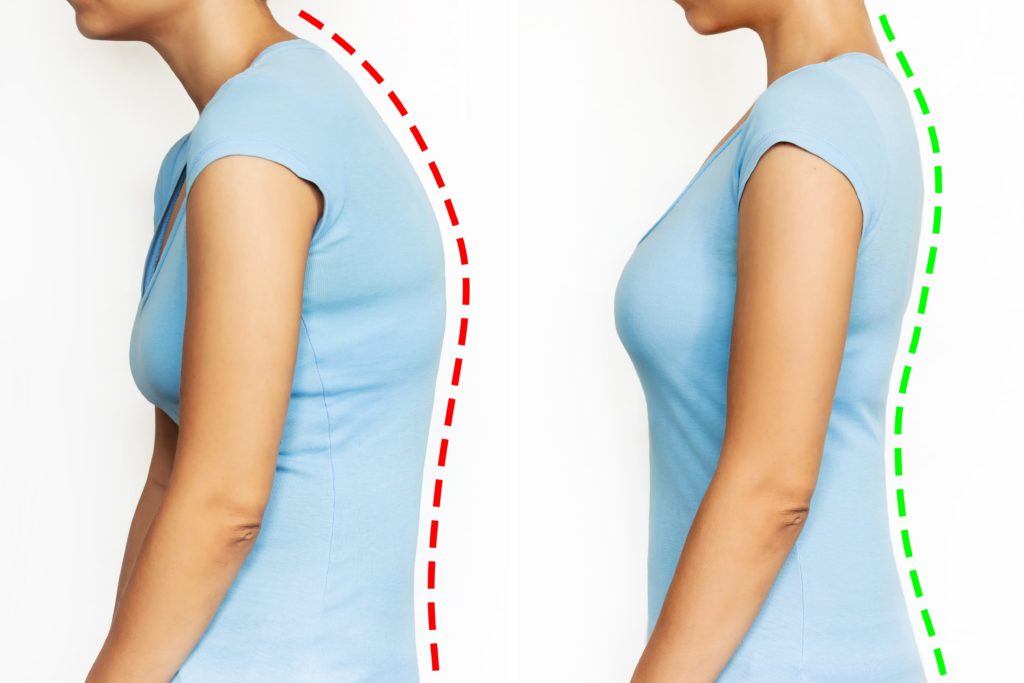
Side Effects Of A Bad Posture
The stress of modern life challenges continues to affect our bodies subtly, so we are unaware of its ill effects till they become prominent. A bad posture does not develop overnight but is a gradual result of an unhealthy routine. Developing a wrong spinal posture harms the body in the following manner.
- You may develop a stiff and painful back if you do not care for your spinal alignment.
- Slouching your shoulders frequently alters your posture and could lead to shoulder pain.
- A postural problem can weaken your back and neck muscles and affect their functions.
- You may experience difficulty in lifting or moving bulky items.
- Your physical fitness may deteriorate if you do not care for your posture.
You can avoid all the ill effects of a bad posture with regular practice of Yoga.
Yoga Poses For Postural Problems
- Gomukhasana
The ‘cow face pose’ is a sitting Yoga posture that adequately stretches your arms, shoulders, and back. Gomukhasana is one of the best Yoga postures to tone the upper body and strengthen your back muscles.
To perform Gomukhasana
- Sit on the floor, keep your spine erect, and stretch your legs in the front.
- Now bend your right knee and cross it over your left leg, so the right heel is close to the left hip. Repeat the step by bending your left knee and folding your left leg.
- Stack your right knee directly above your left knee and press your butt firmly against the floor.
- Straighten your upper and lower back so that you are not hunched forward.
- Raise your right arm sideways so that your palm faces backward. Bend your right elbow and retract it backward. Your right palm and forearm should be close to your spine.
- Elevate your left arm so that your fingers point to the sky. Rotate your left wrist so that your palm faces inward.
- Bring your left hand downward by bending the elbow. Try to clasp your fingers or hold both hands. If not, try to keep the hands as close to each other as you can.
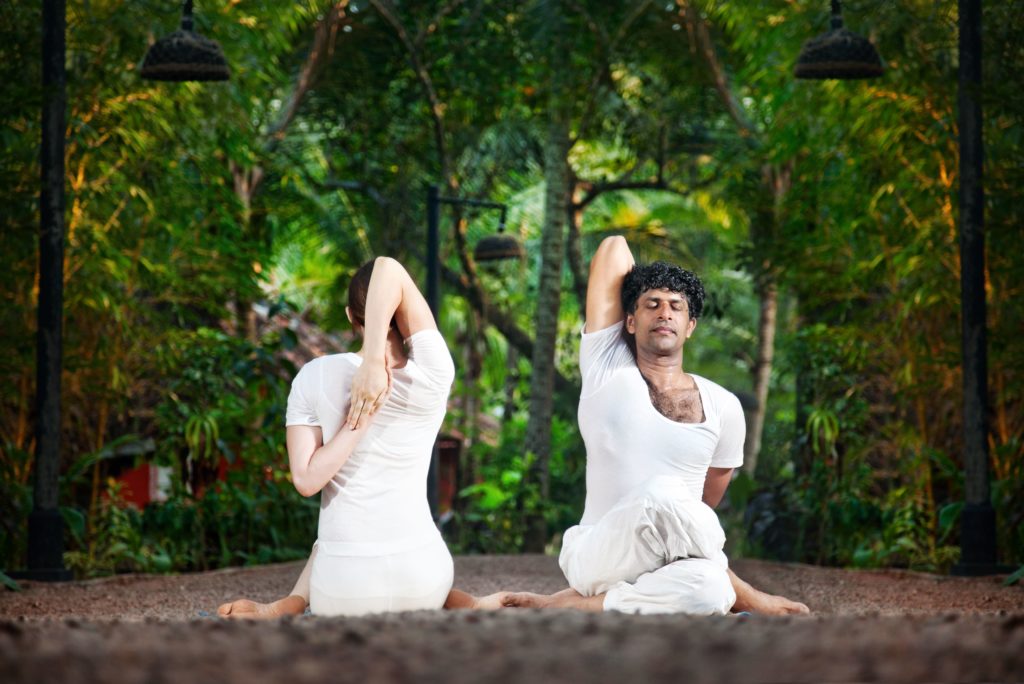
Remain in Gomukhasana for 5-10 breathing cycles before relaxing your body. You can repeat the asana by interchanging the position of both hands. Gomukhasana stretches your spine and strengthens your neck and back muscles.
- Phalakasana
Phalakasana is the plank pose that is quite popular among fitness-conscious folk nowadays. The Yoga pose is a great way to tone your core and develop a healthy spinal alignment.
To perform Phalakasana
- Lower your body on the floor and balance yourself on all fours. Place your arms perpendicular to the floor, and keep some distance between your knees.
- Take your right foot backward till you straighten your knee. Curl your toes and press your foot firmly against the floor.
- Repeat the same with your left leg and keep some distance between both legs.
- Press your palms firmly against the floor to balance your body weight.
- Look straight ahead or keep your neck in a neutral position. Press your heels backward without touching them to the floor so that you feel an excellent stretch to your calf muscles.
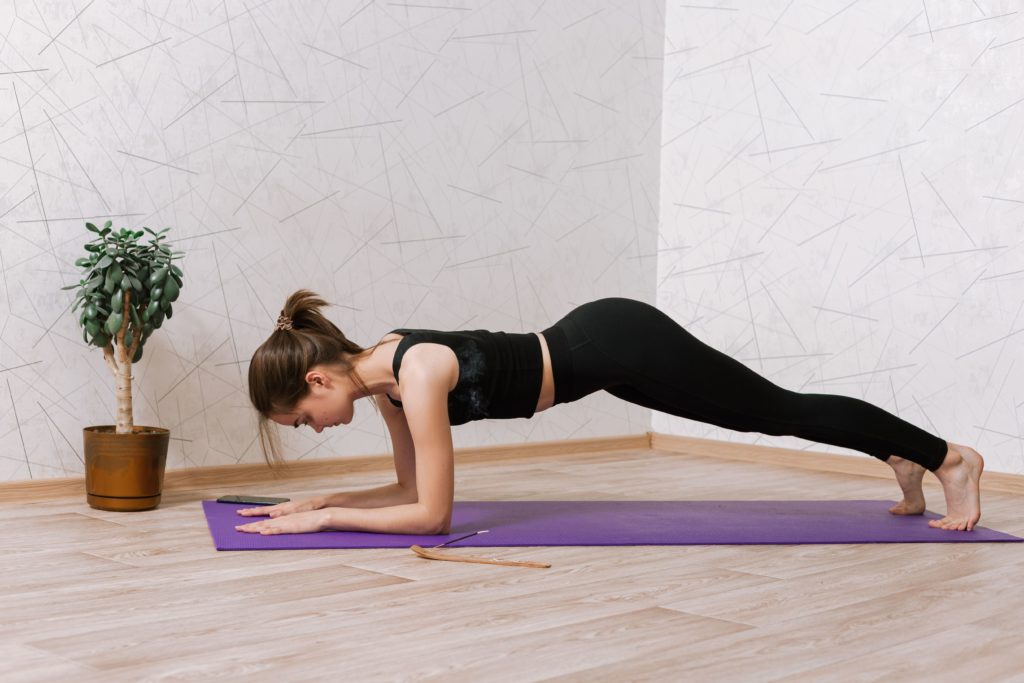
Remain in Phalakasana for 5-10 breathing cycles before relaxing your body. Phalkasana restores a good posture by strengthening your lower back muscles.
- Ardha Matsyendrasana
The ‘seated twist pose’ is an excellent Yoga asana to tone your core muscles and strengthen your back. Ardha means half, and Matsyendra means ‘lord of the fishes’; therefore, the Yoga posture is also known as the ‘half of lord of the fishes’ pose.
To perform Ardha Matsyendra.
- Sit cross-legged on the floor, gently retract your shoulders, and keep a straight back.
- Cross your right leg over the left, so the right knee is stacked on top of the left knee.
- Now lift your right knee and place your right foot close to the left knee. Simultaneously, place your right palm close to your right hip.
- Press your right foot and right palm firmly against the floor for support.
- Elevate your left arm, turn it to the right and lower it, so the left elbow touches the right knee. Press the knee and elbow against each other to create some resistance.
- Twist your torso and upper body, and focus your gaze in front of your right shoulder. Continue normal breathing throughout Ardha Matsyendrasana.
- To release the Yoga posture, elevate your right arm slightly and relax your upper body.
- Repeat the same steps by interchanging the positions of both hands and legs.
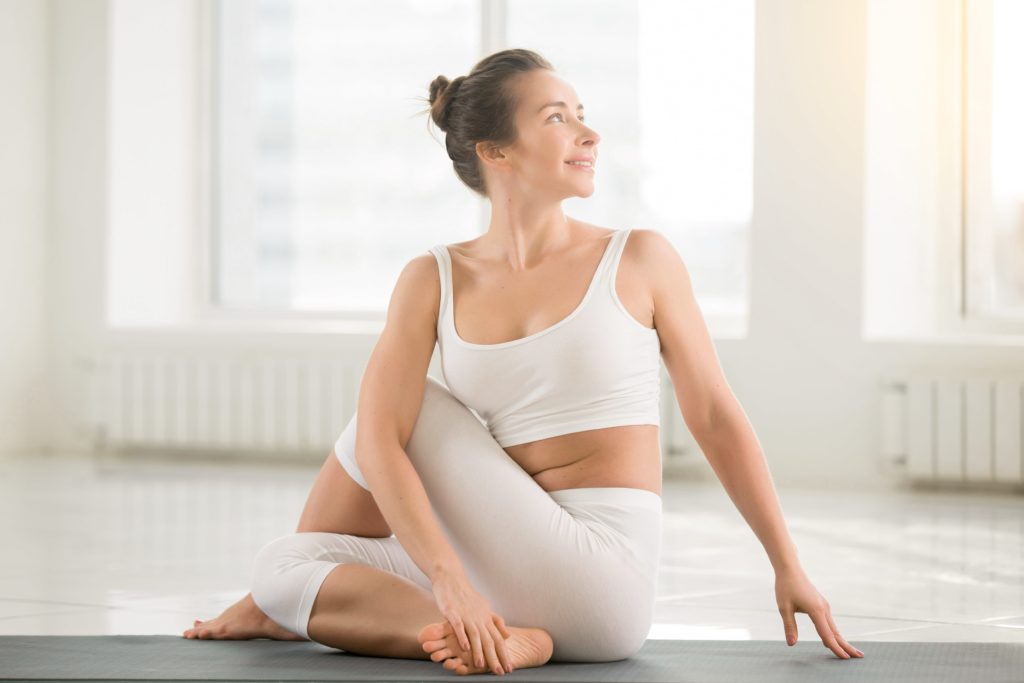
You can remain in Ardha Matsyendrasana for 5-10 breathing cycles on each side. The Yoga posture is effective in strengthening the neck and shoulder muscles. The asana improves your blood circulation, which also plays a vital role in nourishing the back and neck muscles.
- Bhujangasana
The ‘cobra pose’ is quite popular and influential in treating back pain. It is a back-bending Yoga pose that forms the base for various other Yoga poses.
To perform Bhujangasana
- Lie down with your belly touching the ground and relax your limbs.
- Bend both elbows to place your palms on either side of the shoulders.
- Simultaneously elevate your head and neck slightly.
- Now gradually hoist your head, neck, chest, and torso off the ground while straightening your elbows.
- Extend your feet backward and press your thighs firmly against the floor. Maintain some distance between your legs to balance your body better during the asana.
- Bend your elbows very slightly to avoid pressuring your shoulders.
- Try to push your chest outward and extend your neck backward to stretch your back.
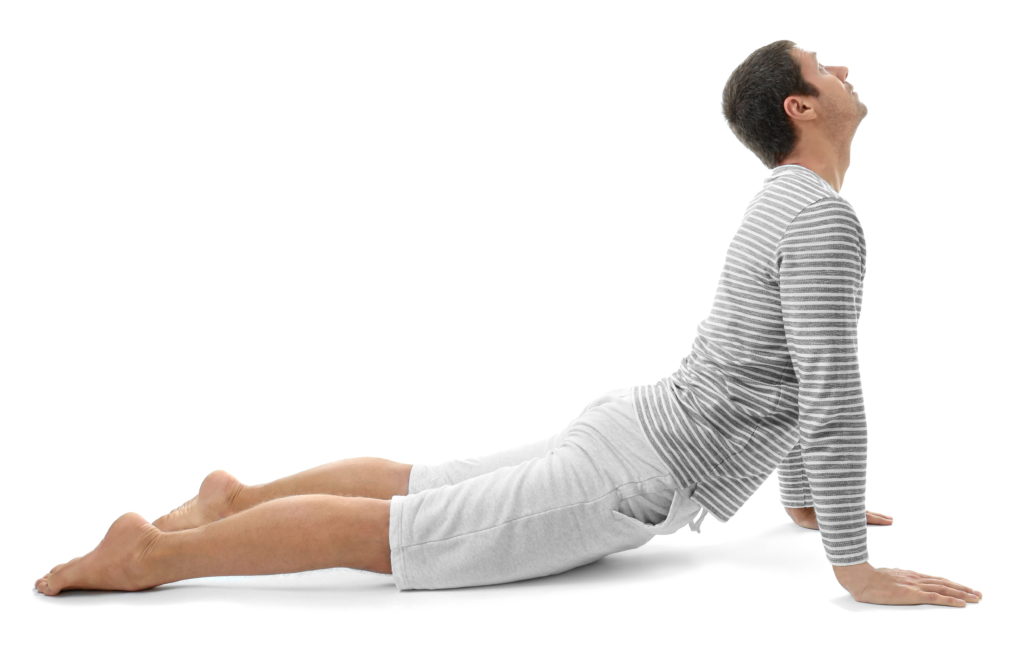
Remain in Bhujangasana for 5-10 breaths before relaxing your body. The Yoga posture is excellent for reversing postural disturbances that result from prolonged sitting in an odd position. Bhujangasana is effective in soothing a stiff and painful lower back.
- Ustrasana
The camel pose, or Ustrasana, is a backward bending Yoga pose that strengthens and tones your core, shoulders, neck, and back muscles.
To perform Ustrasana
- Kneel on the floor, with some distance between your knees and touch your shins and the back of your feet to the floor.
- Keep your hips, knees, and shoulders in a straight line.
- Push your sternum outward as you inhale and allow your elbows to fall backward.
- Expand your chest, retract your shoulders, and straighten your spine as you allow your arms to fall backward.
- Touch the flat of your feet with your palms or clasp your ankles firmly to support your body.
- Try to look backward without over-straining your neck muscles.
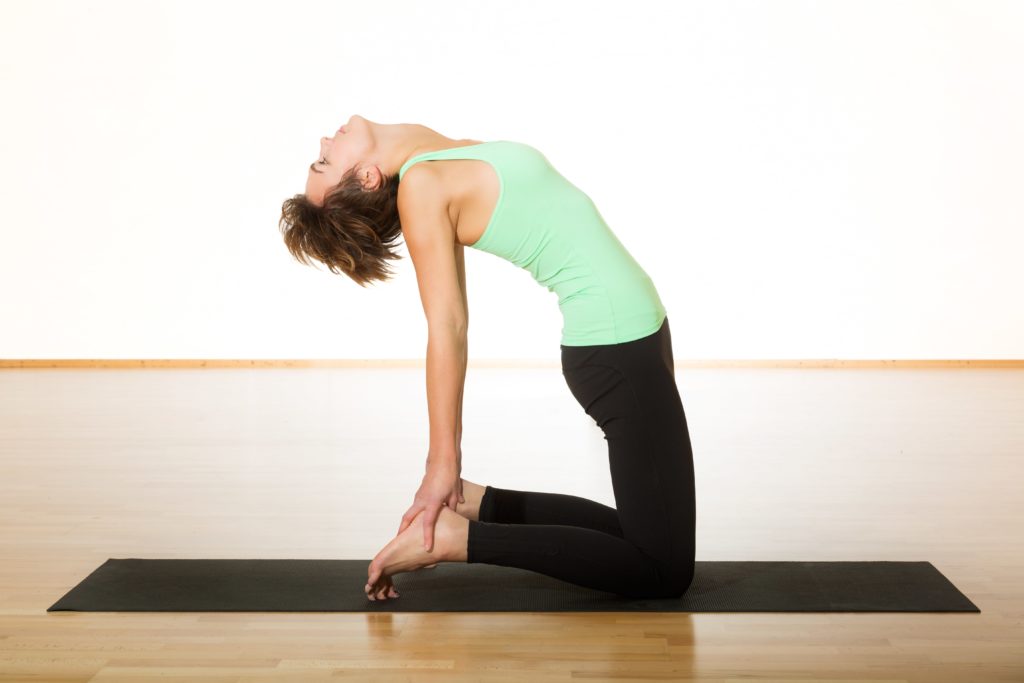
Remain in Ustrasana for 5-10 breaths before relaxing your body. It is advisable to continue generally breathing during Ustrasana. The camel pose gives an excellent stretch to your spinal muscles and adjusts your vertebral alignment. It is a suitable Yoga posture to get rid of stiff shoulders and a bad back. Ustrasana is known to rectify postural problems due to prolonged sitting hours.
- Dandasana
Danda means a straight staff or stick. Dandasana is a seated Yoga pose that requires you to sit with a straight back and focus on your spinal posture. Dandasana, or the staff pose, is a foundational Yoga posture that forms the basis of several other Yoga postures.
To perform Dandasana
- Sit down on your Yoga mat and extend your feet forward.
- The tips of your big toes should touch each other with a slight gap between the heels.
- Flex your ankles as if curling the toes towards your navel. Turn your thighs inward slightly without rotating your knees or ankles.
- Simultaneously press your palms against the floor on either side of your hips.
- Broden your shoulders by gently expanding your chest, straighten your back, and look straight ahead.
- Remain in Dandasana for 5-10 breathing cycles before relaxing your body.
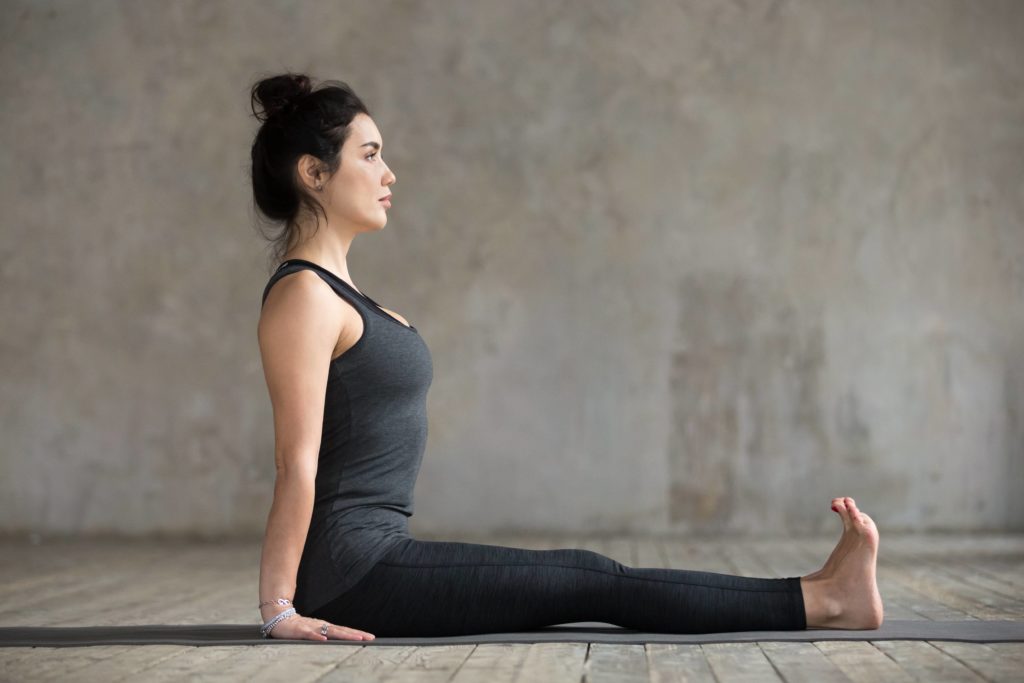
Dandasana may seem like an effortless Yoga posture, but it plays a pivotal role in strengthening your back muscles, core, and thighs. Dandasana is a great way to improve posture and eliminate chronic back pain.
- Suryanamaskar
Surya Namaskar includes 12 Yoga postures that you perform in a specific sequence. The Surya Namaskar is also known as the Sun salutation. The 12 Yoga postures that form the Surya Namaskar collectively work on every muscle of your body. Ancient teachings and traditions tell much more about the mighty Surya Namaskar than what meets the eye.
CLICK HERE to read our blog on Surya Namaskar and learn all its steps.
You can practice several Yoga postures to restore your robust posture and retain a healthy physique. It is always a wise idea to learn and practice Yoga under the guidance of a certified Yoga trainer only. You may also discuss your health concerns with your physician to know if Yoga suits you well.
Give yourself the gift of robust health and a happy life with regular Yoga practice!







